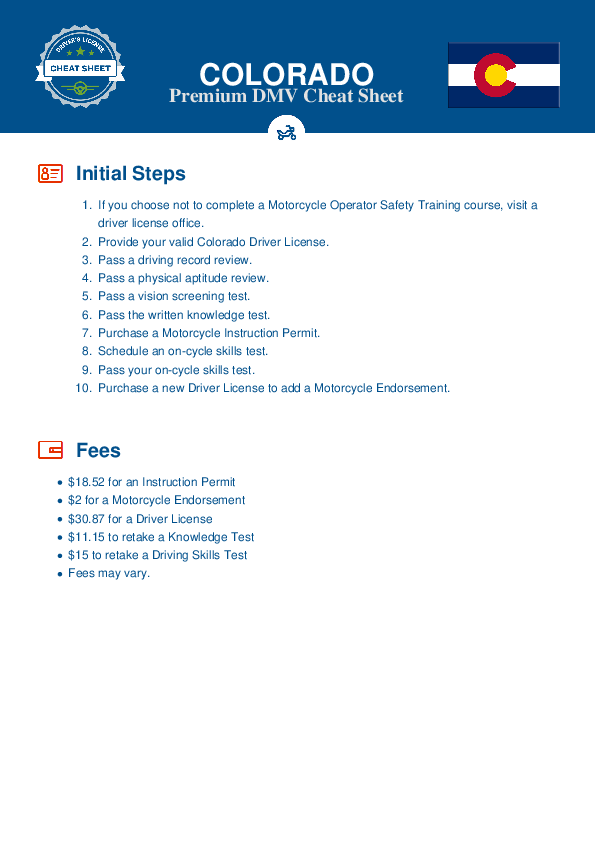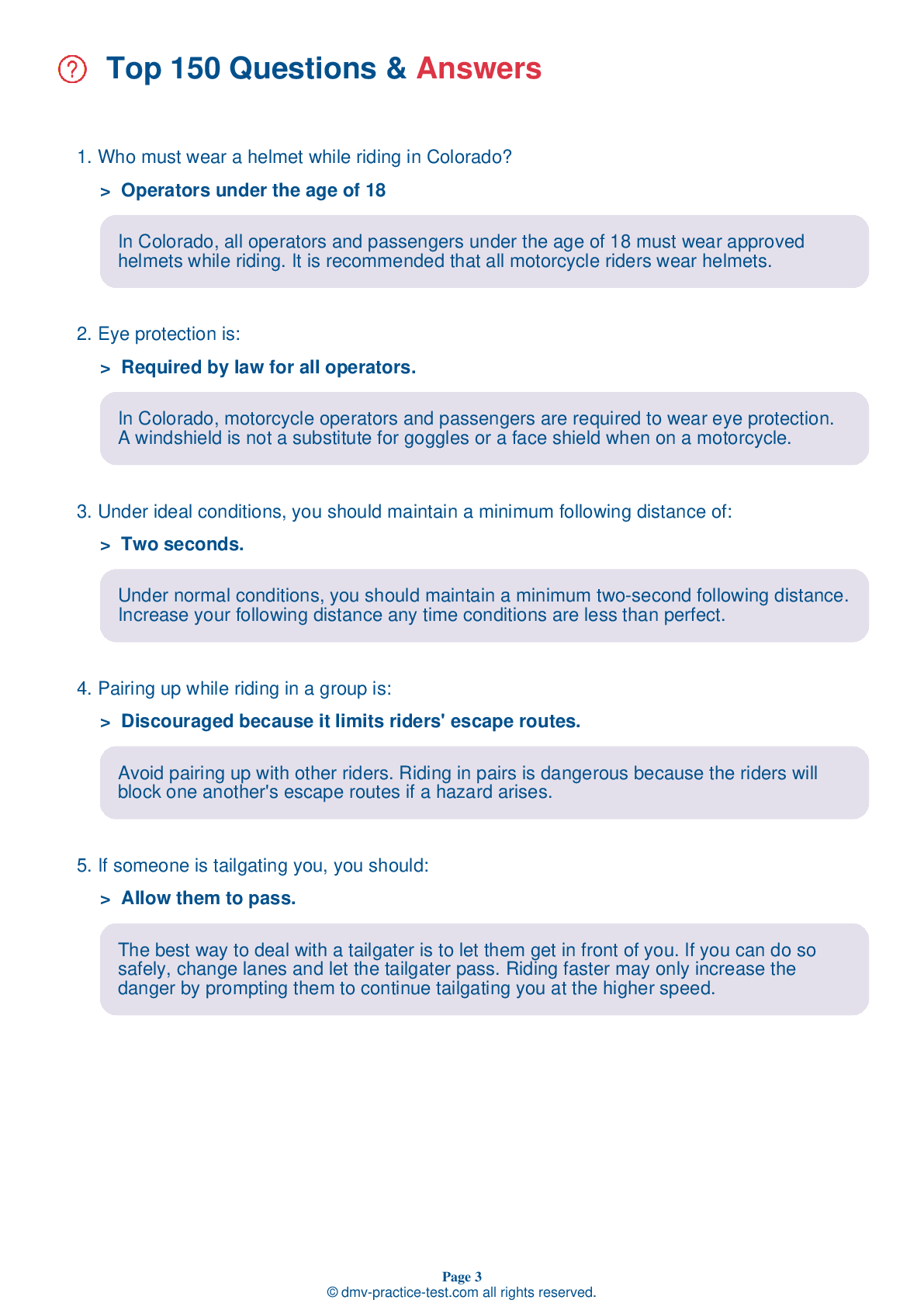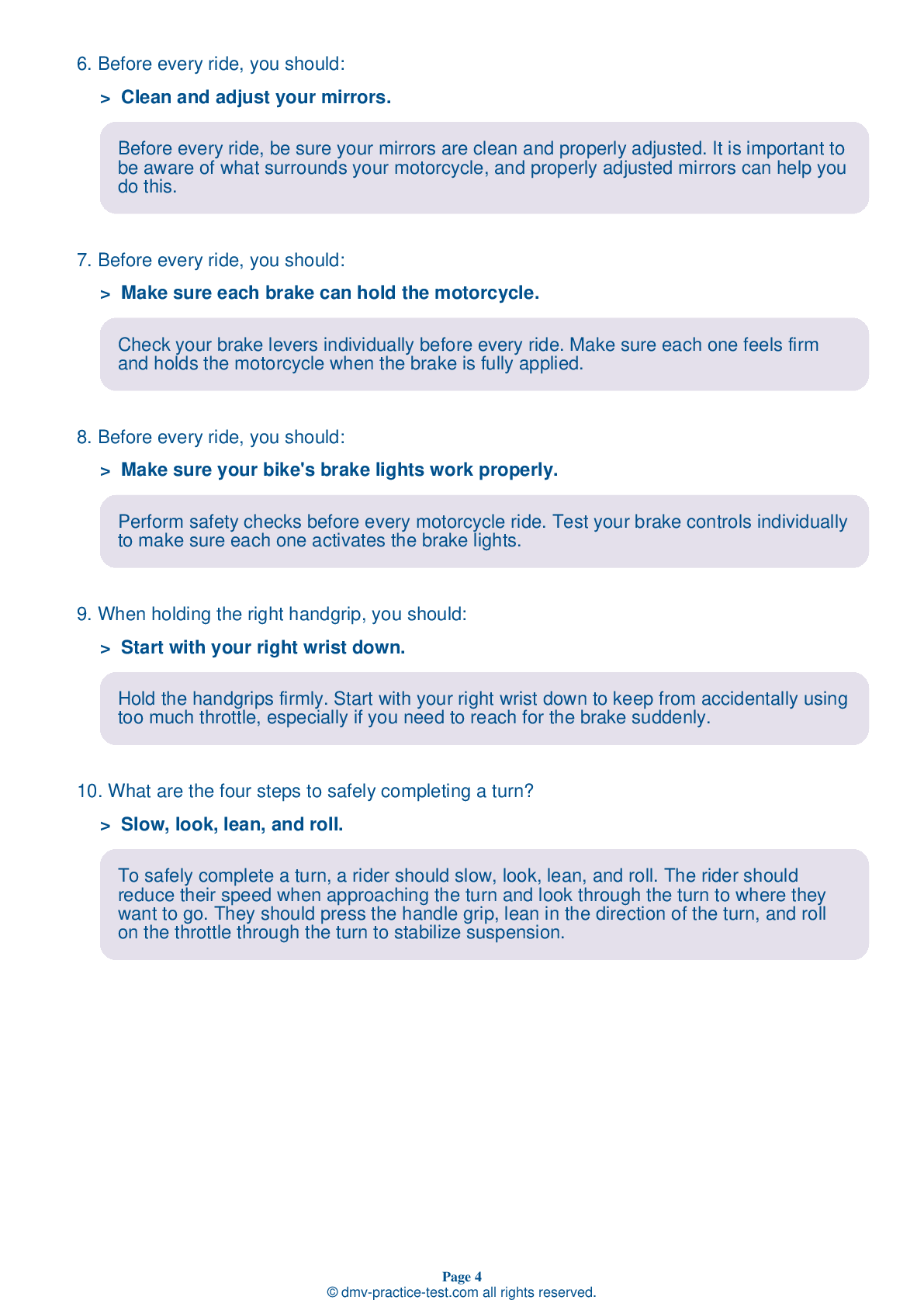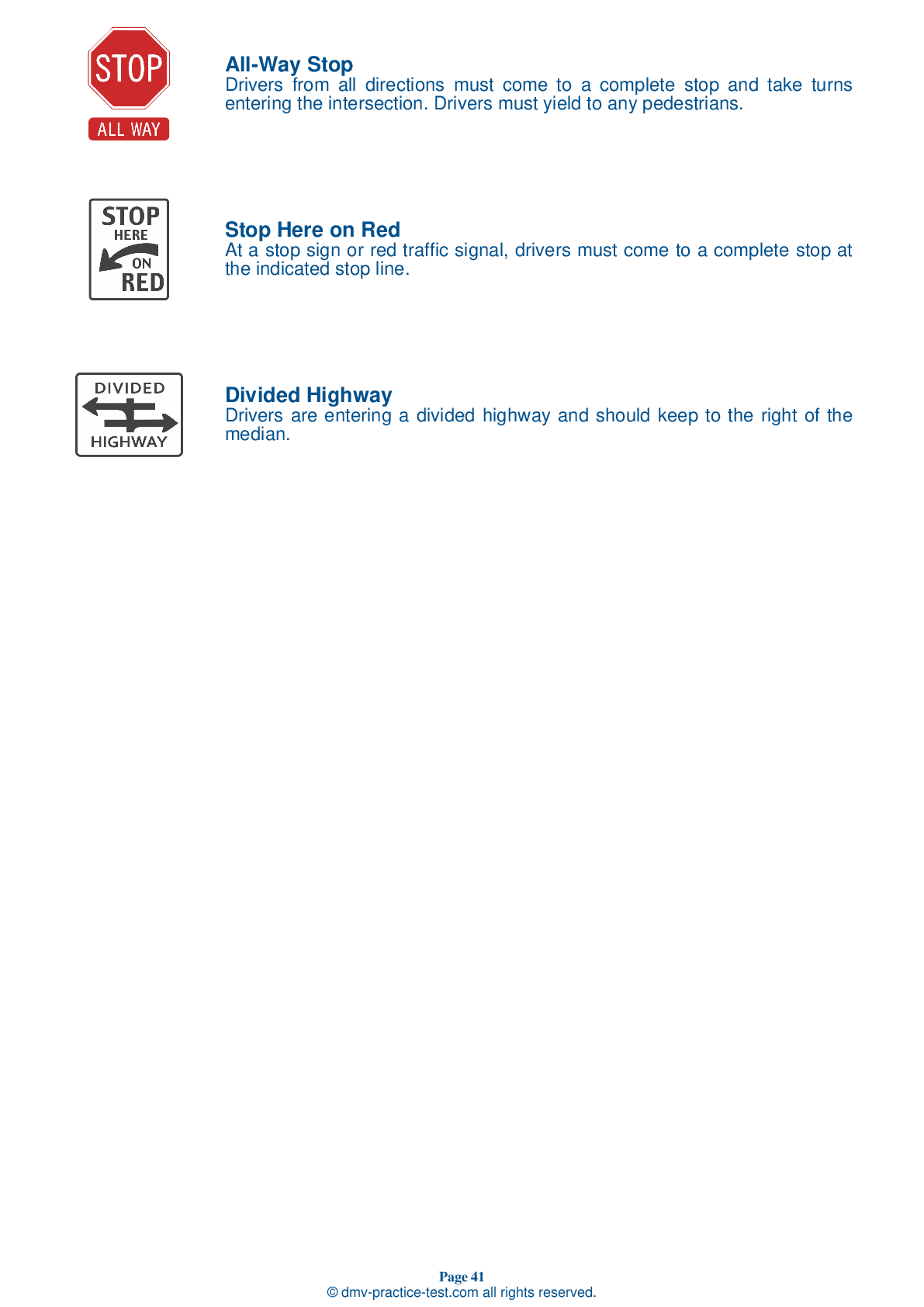Motorcycle Test | License CO 2025 | FREE Online Practice! #7 Page 3 of 4
Take this FREE motorcycle test (license in CO 2025) to check your knowledge of the road rules. To improve your results, download a motorcycle handbook online, study theory, and practice for free on our website. Still worried about how to get a motorcycle license in Colorado in 2025? Check our website for more sample tests, train as much as possible, and boost your grades!
13 . When riding with a heavy load, you will want to adjust the:
Before riding with a heavy load, you should make sure your tire pressure, spring pre-load, air shocks, and dampers are at the settings recommended for the relevant weight.
14 . Increase your following distance if:
Open up your following distance if your motorcycle will require a longer distance than normal to stop. Additionally, if you are riding in heavy traffic or if you cannot see through the vehicle in front of you, you should also increase your following distance.
15 . The gear shift lever is located:
The gearshift lever is located in front of the left footrest and is operated by the left foot. To shift up to a higher gear, position your foot under the shift lever and lift. To downshift, press the shift lever down.
16 . If you are riding in traffic when a small animal enters your lane, you should:
Do everything you safely can to avoid hitting an animal in the road. If you are in traffic, however, you should remain in your lane. Swerving into another lane of traffic to avoid hitting an animal can cause you to collide with another driver. Hitting something small is less dangerous than hitting something big.
17 . If your drive chain breaks, you:
If your chain breaks while you are riding, you will notice an instant loss of power to the rear wheel. Close the throttle and brake to a stop.
18 . Which of the following is not an example of a slippery surface?
A number of surfaces can provide poor traction for tires. Wet pavement; roads covered in loose gravel or sand; muddy, snowy, or icy areas; painted lane markings; oily areas; and metal covers and plates in the road can be more hazardous for a motorcyclist than dry pavement.
See the exact questions that will be on the 2025 Colorado DMV exam.
99.2% of people who use the cheat sheet pass the FIRST TIME
Jeneen was tired of paying $5/gallon. She got herself a scooter that required the motorcycle license. She studyed the motorcycle test cheat sheet and passed her test the next day!
Christopher tells us how he knew nothing prior to obtaining the motorcycle study guide, and he only got one question wrong because he clicked on the wrong answer by mistake.



